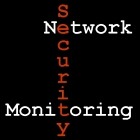Preview: Hunting Security Bugs
Yesterday I received a copy of Hunting Security Bugs . One of this book's authors is Tom Gallagher, who posted thoughts on Microsoft's security initiatives. This looks like a great book, especially as a companion to The Security Development Lifecycle , also by Microsoft authors. A third book, The Practical Guide to Defect Prevention , arrives in the spring. This may be too developer-oriented for my needs, but I might take a look at it. I am glad to see Microsoft sharing the knowledge it has gained through its ongoing security program. You can look at my Amazon.com Wish List to track books I plan to read, but don't have copies. My reading page shows books I own that I plan to read. The reading page also links to my recommended books lists.

